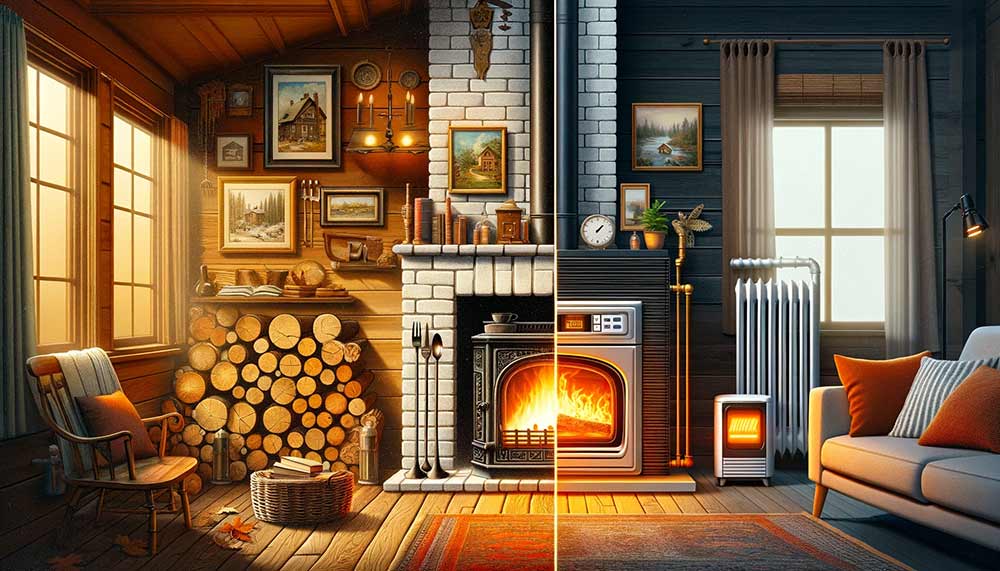As the winter chill sweeps through Williamsburg, VA, it’s hard to imagine staying warm without the modern luxury of a furnace. But have you ever wondered how we got here? The history of home heating is a fascinating journey from rudimentary fireplaces to sophisticated, eco-friendly furnaces. At Nelson’s Heating & Cooling, we’re not just experts in maintaining and installing the latest HVAC systems; we’re also enthusiasts of how heating technology has evolved. Let’s take a nostalgic trip down memory lane.
The Era of Fireplaces: The Beginnings of Home Heating
The story of home heating begins with fireplaces. Early humans discovered fire roughly 1.5 million years ago, but the concept of a fireplace, as a fixed part of a home, emerged around the 12th century. These fireplaces were large, inefficient, and predominantly located in the central gathering space of homes. They provided a communal heat source, with smoke often filling the room due to the lack of an efficient chimney system.
The Advancement of Chimneys: A Game-Changer
The development of chimneys in the 17th century marked a significant evolution in home heating. This innovation effectively vented smoke outside, vastly improving air quality and safety within homes. It also allowed for the construction of smaller, more efficient fireplaces in multiple rooms, spreading warmth more evenly throughout the house.
The Birth of the Stove: More Heat, Less Space
By the 18th century, Benjamin Franklin introduced the Franklin stove, a metal-lined fireplace that stood in the middle of a room. This invention was more effective than traditional fireplaces as it radiated heat in all directions. The stove revolution continued with the cast iron stove in the 19th century, offering greater heat control and efficiency.
Central Heating Systems: The Modern Era Begins
The real transformation in home heating came with the introduction of central heating systems in the late 19th century. Initially powered by coal, these systems featured a central boiler that heated water or produced steam, which was then circulated through pipes to radiators in various rooms. This marked the first time homeowners could heat their entire house from a single heat source, a significant leap forward in comfort and convenience.
Oil and Gas Furnaces: A Leap in Efficiency
The 20th century saw the transition from coal to oil and gas, making central heating systems more efficient, cleaner, and easier to control. The introduction of the thermostat in the early 20th century allowed homeowners to set and maintain a consistent temperature, a novel concept at the time.
The Dawn of HVAC: Integrated Heating and Cooling
As we progressed into the 20th century, the lines between heating and cooling began to blur with the advent of the HVAC (Heating, Ventilation, and Air Conditioning) systems. These systems provided not just warmth in winter but also much-needed relief during the sweltering summer months, all through a single integrated system.
Today and Tomorrow: Smart, Eco-Friendly Heating Solutions
Today, at Nelson’s Heating & Cooling, we are at the forefront of the latest in HVAC technology. Modern systems are not only about comfort; they are also about energy efficiency and reducing our carbon footprint. Programmable thermostats, smart home integrations, and eco-friendly furnaces are setting the stage for a future where home heating is as much about sustainability as it is about staying warm.
From the primal fire pits to today’s smart furnaces, the journey of home heating is a testament to human ingenuity and the relentless pursuit of comfort and efficiency. As we look to the future, one thing remains constant – our commitment at Nelson’s Heating & Cooling to provide the best heating solutions to our community in Williamsburg, VA. Stay warm, stay efficient, and embrace the evolving world of home heating.


Recent Comments